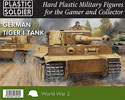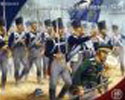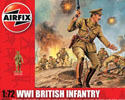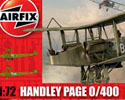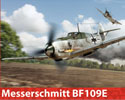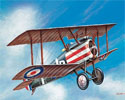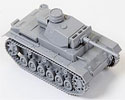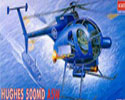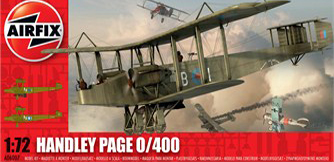The First World War - World War One Aviation
The Air War
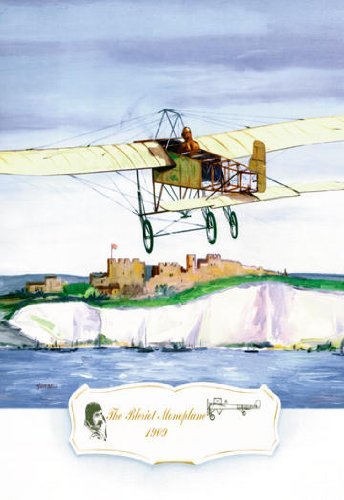
A poster from Amazon illustrating Louis Bleriot making the first successful Channel crossing of an aircraft in 1909
The first controlled flight of a powered aircraft was made by the Wright Brothers at Kittyhawk in America in 1903. By 1914 a number of firsts had been made, the most notable being Louis Blériot's flight across the English Channel in 1909. Aircraft had been used in the Libyan war of 1911 between Italy and the Ottoman Empire, establishing the feasibility of such machines for military application. By 1914 there were a number of models in use by both sides for reconnaissance, and ground attack. By the end of World War One technology had advanced at a fantastic pace and there were multi-engine bombers and single seat fighters that were employed by both sides to project power across the North Sea and English Channel and achieve air superiority over the battle field. In addition to heavier than air aircraft there were the gigantic dirigible airships like the German Zeppelins that carried large bomb loads over great distances to attack civilian urban areas.
In 1914, at the onset of World War One, aircraft were used mainly for scouting, reconnaissance and bombing. Reconnaissance was a particularly significant activity after static trench warfare had caused cavalry to become ineffective in this role; aircraft were the only practical means of observing behind the enemy line. Air to air combat was extremely rare as there were no aircraft that had been designed to do this.
Air to air combat
The initial concern with air to air combat was that of armament. At the beginning of World War One pilots would carry pistols and rifles for the occasional potshot at any enemy aircraft they encountered, some pilots dropped bombs or threw grenades at other aircraft, some even tried grappling hooks; not that any of these were very effective. It was recognized that the most effective solution would be to mount a machine gun. The most logical position to mount the gun on a single seat fighter would be in a forward firing position so the pilot could aim it. The problem was that it would fire directly through the propeller, destroying it.
To avoid the problem of the propeller being destroyed by a stream of bullets, the simple idea of putting the gun on an aircraft with the engine mounted at the back, pushing the aircraft forward, was tried. The results were favorable but the pusher configuration was not the optimum design for a fighter. The tractor configuration, where the engine was mounted at the front pulling the aircraft forward, was a much more efficient arrangement. Several solutions that allowed the machine gun to fire forward avoiding the propeller were tried. A machine gun was mounted on the top wing, on a Foster mounting, so that the gun fired over the propeller. Machine guns were mounted so that they fired to the side at an angle. Deflector plates, steel wedges, were applied to the propeller blades to protect them from bullet hits.
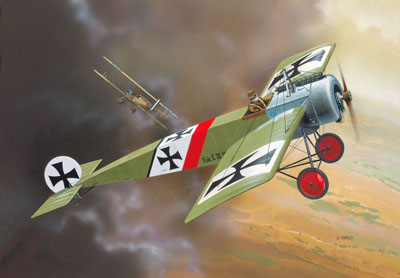
The Fokker Eindecker was fitted with a mechanism that synchronized the machine gun's fire with the propeller so that bullets didn't hit it.
Model Kits of World War 1 aircraft
These all worked to a degree but the most effective method was the synchronization gear. In December 1914 the French Morane-Saulnier company produced the Morane-Saulnier L that used a method, designed by Roland Garros and Raymond Saulnier, that used steel wedges to protect the propeller by deflecting bullets. On April 18 1915 Garros crash landed behind German lines and failed to destroy his aircraft. The German authorities were quick to appreciate the significance of the steel wedges and gave the challenge of copying it to their own aircraft manufacturers. Rather than simply copy the design, Anthony Fokker came up with a fully working method of synchronizing the machine gun's fire to the engine, that interrupted the gun when the propeller was in the line of fire. This mechanism by Fokker, incorporated into his Eindecker monoplane, made a huge impact in aerial warfare over the Western Front and resulted in a period starting in the summer of 1915 that became known as the Fokker Scourge. Pilots like Oswald Boelcke and Max Immelmann of the Imperial German Flying Corps had a huge advantage over the poorly armed types then employed by the Allies air services, and they rattled up victory after victory in their Eindeckers. The Fokker Scourge was broken in early 1916, when the Allies introduced the DH.2 and F.E.2b pusher designs, with the gun mounted at the front, and the aerodynamically superior Nieuport 11 that used a synchronization mechanism of its own.
During 1916 the Allies gained the upper hand as they introduced new types of aircraft and re-organised their air forces to included specialist squadrons. The Germans followed suit later in the year with their establishment of specialist squadrons and in particular the jagdStaffeln, squadrons of specialized fighter aircraft also known as Jastas. The Jastas were organised into higher level groups called jagdgeschwader that were moved about the front to obtain local air superiority for a short period. In 1917 the German air force began to receive Albatross fighters and, during what has become known as 'Bloody April', inflicted serious damage on the Allies, especially the RFC.
Towards the end of 1917 the Allied air superiority was restored with the introduction of the Sopwith Camel, SE5a and SPAD XIII. There was a brief period in 1918 that saw a revival of the German squadrons fortunes when the excellent Fokker DVII started to arrive at the front, but it was short lived before the Armistice ended hostilities and World War One effectively came to an end.
Bombing and ground attack
As the war progressed, and the potential for aircraft for roles other than reconnaissance became apparent, effort was directed towards developing specialized aircraft for bombing. There were two main requirements: one for tactical support of the army, that combined dropping bombs on enemy troops with strafing enemy trenches with machine gun fire; and one for a strategic bomber capable of attacking the enemy's infrastructure and facilities far behind their front line.
The result were two types of aircraft: a small single engine type equipped with downward facing machine guns like the AEG J1 for tactical support; and a big long range, multi-engine bomber like the Handley Page 0/400 and Gotha that could attack strategic targets at long range. Huge dirigible airships, called Zeppelins after the manufacturer, also carried bombs across the North Sea to attack London and other targets in Britain.
Reconnaissance, Scouting and spotting.
At the start of the war the few aircraft in service were mainly given over to the role of reconnaissance and scouting. As the war developed the role of reconnaissance became more and more valuable in identifying hidden machine gun nests and gun batteries. Spotting and monitoring troop build ups was vitally important in preparing for an enemy offensive. Initially the feedback from these scouting flights was often delivered by landing at the staff HQ and handing over the report directly. Messages were dropped from the air and flares were sometimes used. Radio was eventually adopted when the technology had been developed to reduce the weight. Reconnaissance reports were initially made visually and reported by hand. Cameras were adopted but these were big and heavy and the glass slides were cumbersome and difficult to handle in the cold at altitude; it took a great deal of skill to fly over enemy territory and take steady photographs of the ground using them.
Balloons were used for artillery spotting, directing the guns onto the target. These balloons were filled with hydrogen and incredibly vulnerable to tracer fire, hot bullets intended to show the path bullets were taking. They were often surrounded by batteries of anti-aircraft guns and presented difficult targets to aircraft tasked with destroying them.
Zeppelins were used for maritime patrol over the North Sea, delivering information about the movement of the British Grand Fleet. Sea planes and flying boats were operated near the coast and the navies employed seaplane carriers to provide the fleet at sea with airborne scouts.

